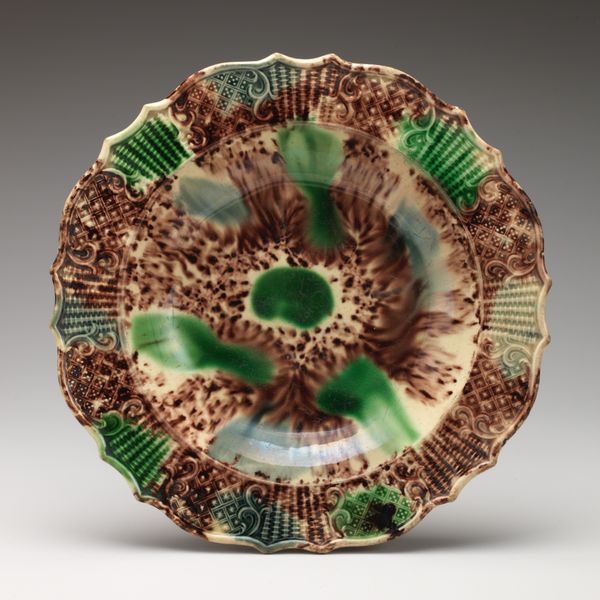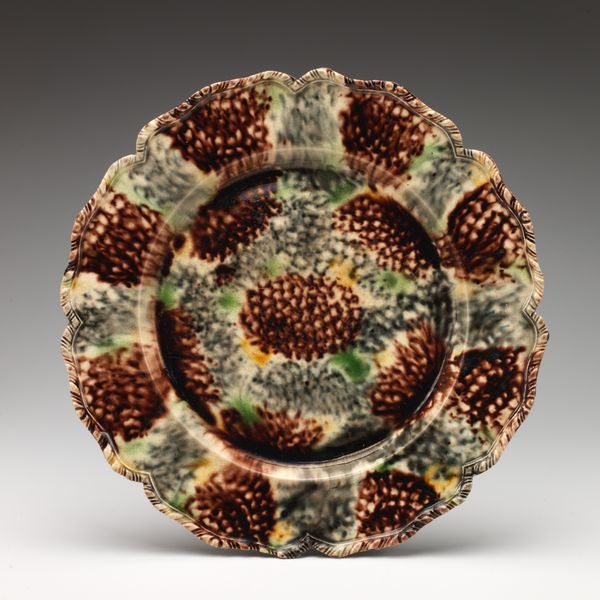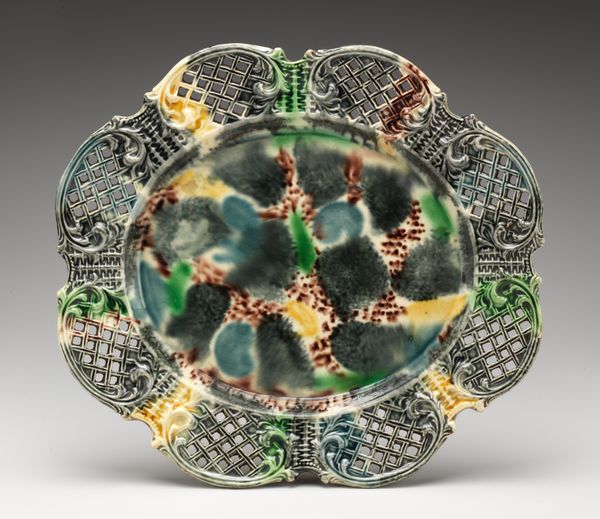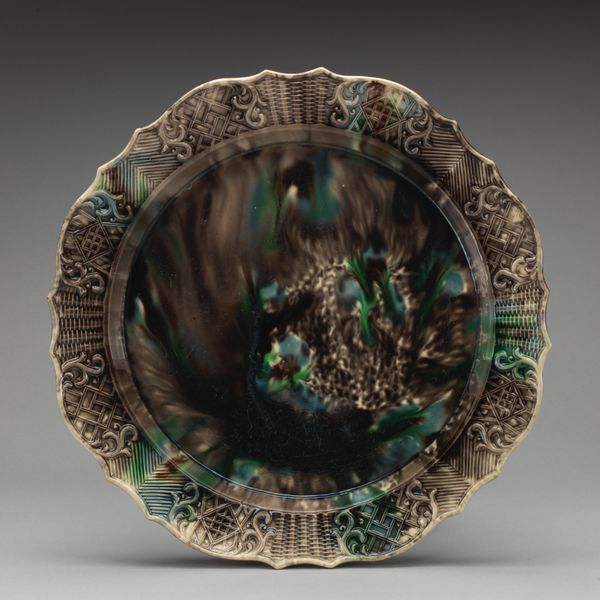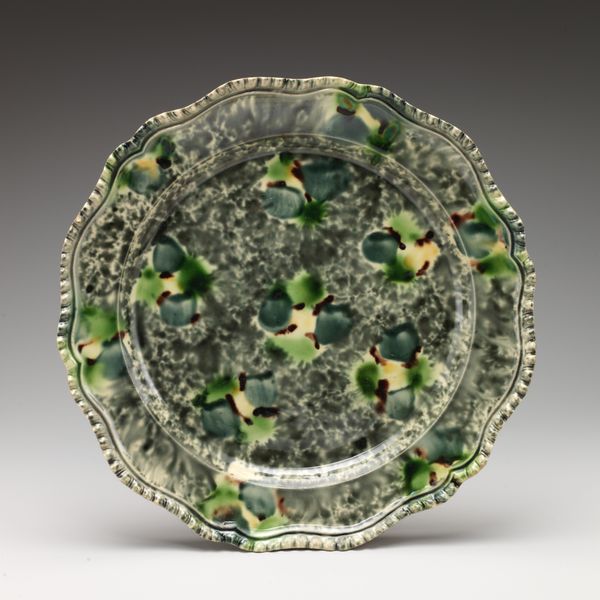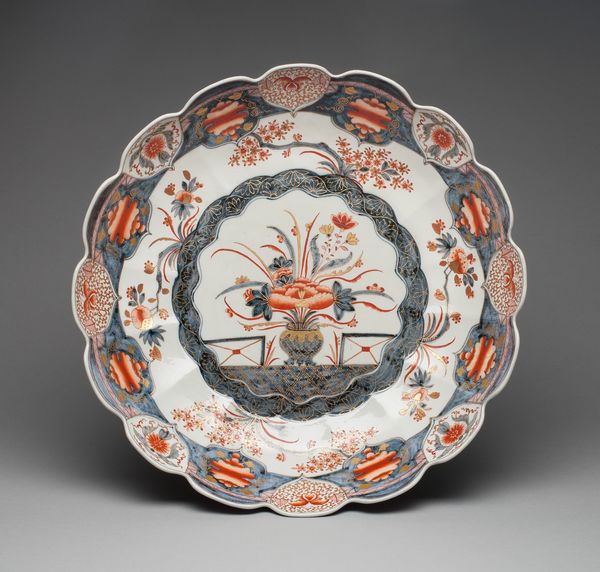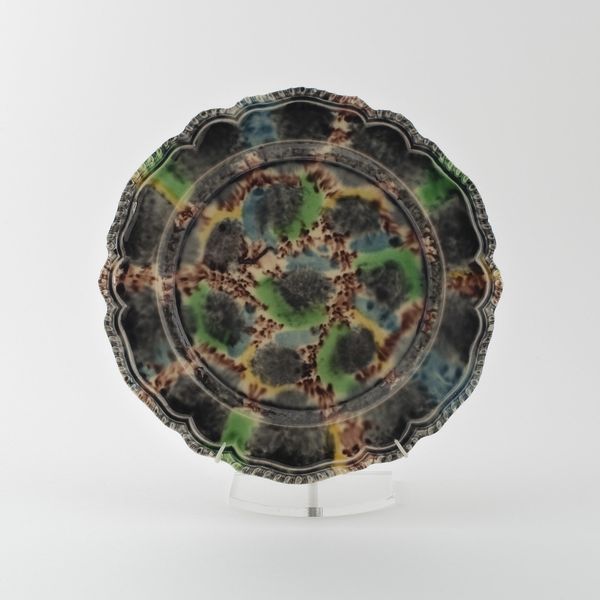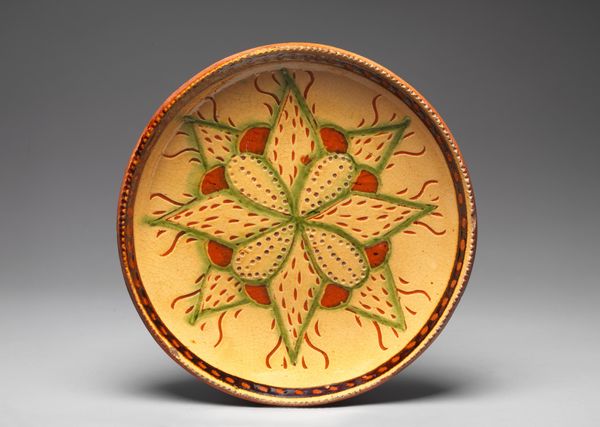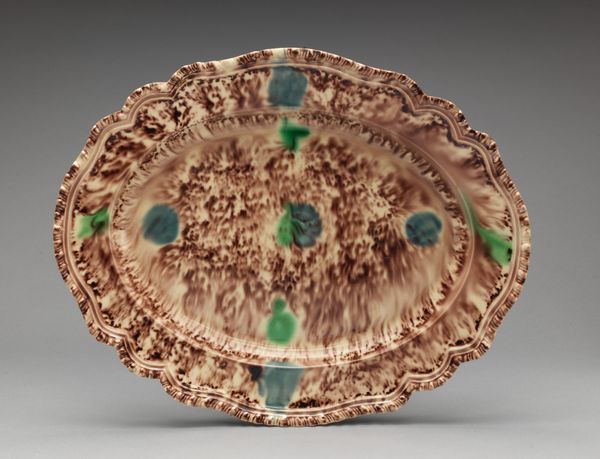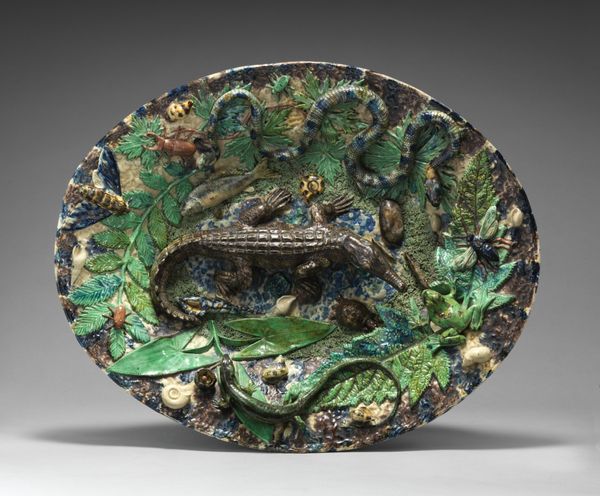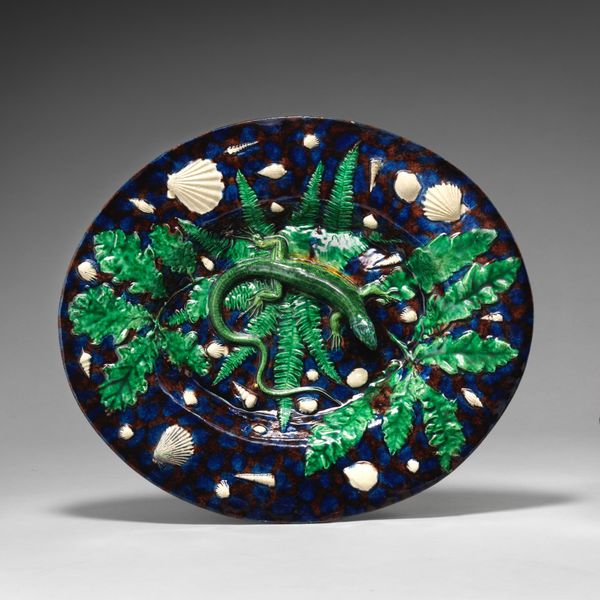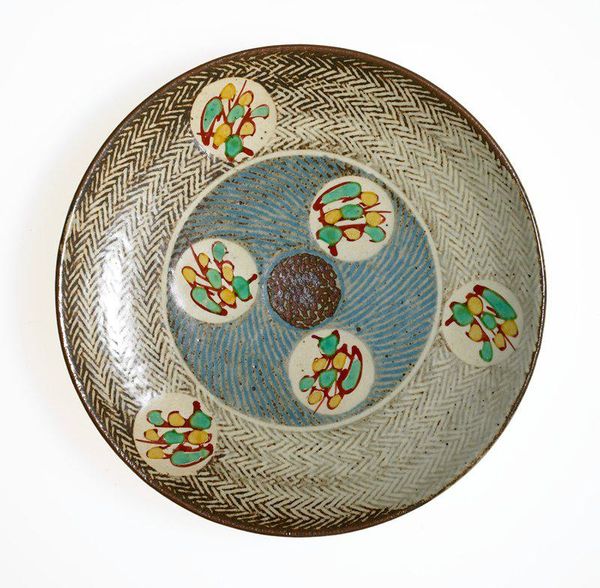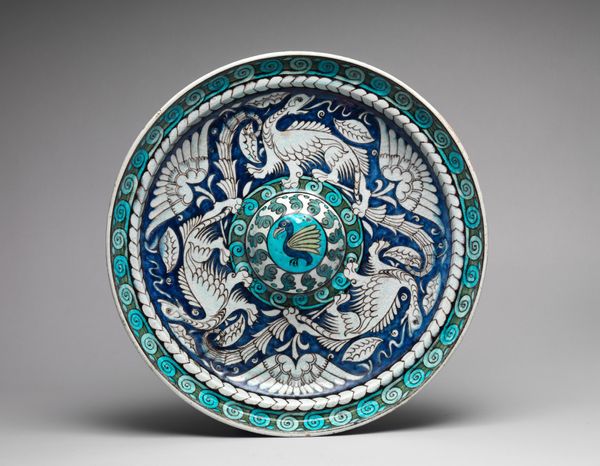
ceramic, earthenware, sculpture
#
ceramic
#
earthenware
#
sculpture
#
ceramic
#
decorative-art
Dimensions: Diameter: 9 in. (22.9 cm)
Copyright: Public Domain
Editor: So this piece, simply titled "Plate," dates back to somewhere between 1760 and 1770. It's earthenware, a type of ceramic, and it's here at the Metropolitan Museum. There’s something about the color palette - the earthy tones against those watery greens – that feels… unexpectedly modern. What do you make of it? Curator: It sings to me of secret gardens, of moss after rain, of unearthed relics whispering stories of tea parties long past. Don't you find it intriguing how such a humble object can carry so much history? It reminds me of my grandmother's stories, both fragile and enduring, if that makes sense. I find myself wondering: what would people eat on this plate? A simple biscuit, perhaps, or some vibrant fruit from a bustling market? Editor: Absolutely! The details around the edges—that almost lattice-like pattern—gives it a tangible sense of history. Why do you think the piece adopts such a muted palette, and what kind of statement could that be making? Curator: I see it as a move away from gaudier colours that you find in say, Royal Doulton, something very contemporary. And for me, that’s it’s charm! It doesn't scream for attention; it invites quiet contemplation. Do you imagine it could have been part of a larger set? Editor: It definitely seems like it would have belonged to other plates. It’s a beautiful example of art history adding subtle statements, as you were saying! Curator: Exactly! It seems simple, but like the perfect cup of tea, it leaves one satisfied. Editor: That's a very cozy image, thank you! It adds an incredible layer of human character to this otherwise material form. Curator: Indeed! The ordinary suddenly becomes extraordinary through touch and memory. And hopefully for the viewer, an encounter they won’t soon forget.
Comments
No comments
Be the first to comment and join the conversation on the ultimate creative platform.
